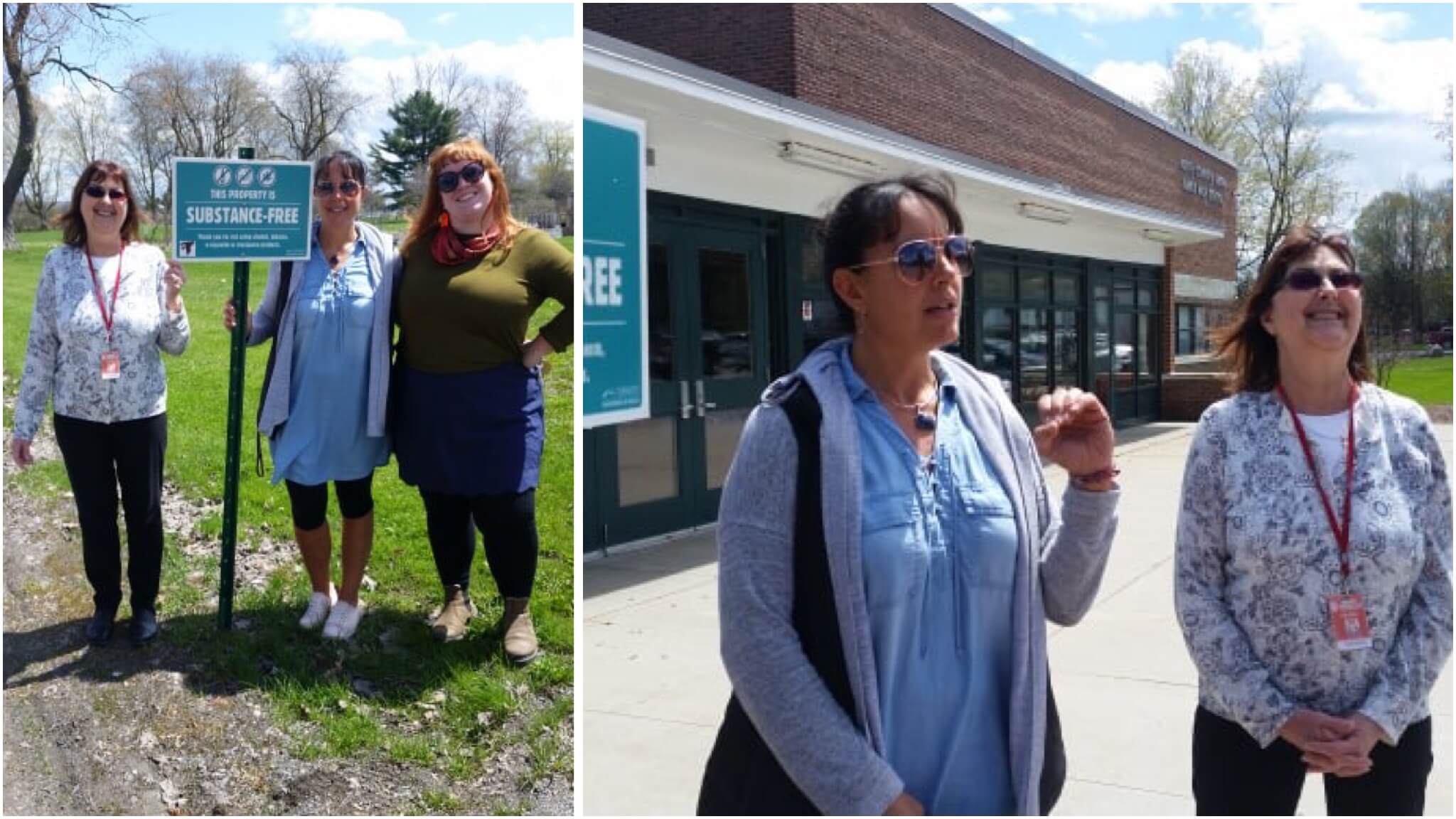NEWPORT — Electronic cigarettes or e-cigarettes are the most commonly used tobacco product among middle and high school students in Vermont, and new data from the Youth Risk Behavior Survey has shown that there is an alarming number of students in Orleans county who report trying electronic vapor products.
In an effort to combat that growing statistic, Lake Region Union High School collaborated with NEKLS Prevention Services and held a parent informational night as well as educational sessions for students.
The goal of the two events was to inform parents and students of the growing concerns around these products. E-cigarettes come in many different sizes, colors, and types.
Tobacco companies have even designed products to resemble small electronic devices that are compact and allow for discreet carrying and use. Lake Region administration and staff say they are seeing an increase in e-cigarette devices that look like USB sticks and other everyday items.
“We believe that it’s critical parents talk with their children about these products to let them know that vaping is not safe and that long term impact of the use of e-cigarettes is unknown,” Sharon Gonyaw, Vice Principal, and Andre Messier, Principal, of LRUHS said in a joint statement.
Health officials say that kids need to know that nearly all e-cigarettes contain nicotine.
Research has not only shown that nicotine is highly addictive and is harmful to a developing adolescent brain, but most concerning is that exposure to nicotine can lead to addiction and disrupt attention and learning.
NEKLS Prevention Services has also closely collaborated with North Country Union Junior High School health educator, Julie Gunn and SAP, Pat Gelo, on educating students.
This outreach has come through class presentations, “Kick Butts Day” activities, and getting updated Vermont Dept of Health substance-free signage posted around the school grounds and fields.
“I often challenge students to think about what they want to control their lives when it comes to nicotine addiction,” Julie Gunn said. “I enjoy sharing information and helping them in making good decisions around being nicotine free.”
Most recently, NEKLS Prevention Services attended NCUJHS’s Parent Night and offered several mini E-Cigarette presentations to parents, beginning with a 5-minute video from VOX Media, “How Juul Made Nicotine Go Viral” followed by a brief presentation and Q&A.
“I would say the most important thing we need to do is educate everyone, students, parents and community members about the dangers of vaping,” Pat Gelo said. “Knowledge is power.”
Messier and Gonyaw say that the community must work together to provide children with the knowledge and support to help them make a healthy decision when it comes to vaping.
Below are facts and resources from the Vermont Department of Health to help raise awareness about the vaping crisis and nicotine addiction.
◙ E-cigarettes, which frequently contain nicotine, are never safe for youth and young adults.
◙ E-cigarette use among youth increased by 75% from 2017 to 2018 [National Youth Tobacco Survey].
◙ Youth use of e-cigarettes increases the future risk of smoking traditional cigarettes and can be just as addictive.
◙ Customizable e-cigarette devices can be used to deliver non-nicotine substances, such as cannabis extract or honey oil.
◙ According to a study by Environmental Health Perspectives, 75% of fruit-, candy- and cocktail flavored e-cigarettes, which attract youth, contained diacetyl, a chemical linked to lung disease.
◙ E-cigarette aerosol can contain harmful substances, including nicotine, heavy metals like lead, volatile organic compounds and cancer-causing chemicals [John Hopkins School of Public Health].
◙ Since launching in 2016, JUUL has become the most popular e-cigarette on the market. Its design, which looks like a USB flash drive, makes it easy to conceal.
◙ All JUUL products contain nicotine; one pod delivers the equivalent of a pack of cigarettes.
◙ Signs of addiction to nicotine include trembling, nausea and frequent e-cig use. Watch for behavior such as frequent trips to the bathroom, reports of illness or hand-to-mouth activity.
◙ Youth can receive help in quitting e-cigarettes from their pediatrician. School nurses can assist by recognizing symptoms, discussing these with the student and parent and referring to 802Quits, Vermont’s 24/7 quitline (1-800-QUIT-NOW) for ages 13 and older. For more, visit 802quits.org
◙ It is illegal to sell any tobacco product to minors, including e-cigarettes, yet underage teens are obtaining devices, often from older students or family and friends.
◙ E-cigarettes are called “tobacco substitutes” in Vermont’s state statute. Use of e-cigarettes is banned – except for vape shops – wherever lit tobacco products are restricted, including on school grounds, at school events and while being transported.
◙ It is important for parents to talk to their kids about the dangers of using e-cigarettes, including JUUL and other commonly-used products such as Suorin, Justfog Minifit and MarkTen.
Below is a list of resources curated by NEKLS Prevention Services for parents who would like to learn more about this issue.
VDH: E-cigarettes, vaping and JUUL Resource 2019
Stanford Medicine Tobacco Prevention Toolkit: E-Cigs and Vape Pens
Truth Initiative E-Cigarettes Fact Sheet
The U.S. Surgeon General’s Fact Sheet
Concerned parties are also encouraged to contact Allyson Howell from NEKLS Prevention Services, through email at [email protected] or calling 802-334-7506.



